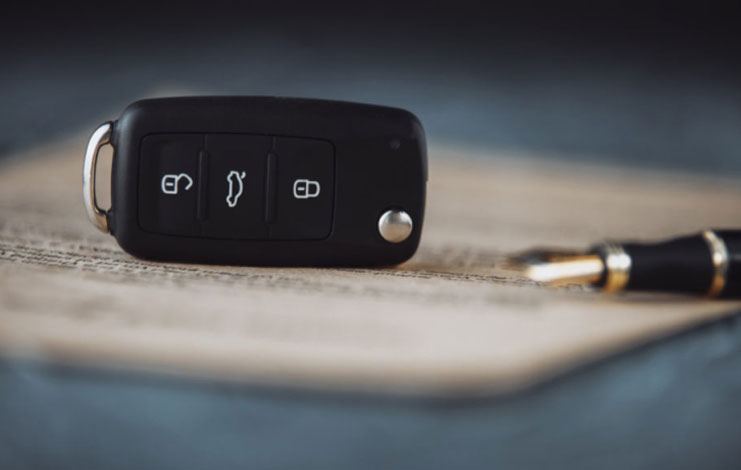Key control “best practices” - loss prevention advisory.

Key control is probably the most important aspect of inventory security and prevention of vehicle theft. Inadequate key control leads to theft. The suggested “best practices” information below, when followed, can be a major deterrent to dealership vehicle thefts.
Secure All Vehicle Keys: Keys for all vehicles on a dealer’s lot should be stored and kept in a secure area when not in use. Keys should be under the supervision of a Key Custodian.
Each set of keys for a vehicle should be kept in separate locations.
- One set should be secured, locked away and controlled by a member of management
- The other –working set – of keys typically used for demonstration or test-drives should be secured when not in use.
Security Techniques for the Working Set of Keys Include:
- Mechanically locked device – many dealers keep keys locked in a cabinet on a board for convenience. Other suitable locations would be a locked drawer, safe or secured office. The lock on any of these solutions should be sturdy and access controlled – only one individual responsible (Key Custodian) should have access at any given time. The Key Custodian should log in and out all key movements.
- Electronic key control – this option employs the use of an electronic inventory key control system. There are suppliers of equipment that will provide key control, prospect control, employee accountability and dealer tag control through electronic means. It is very important that the Key Custodian be fully qualified in the machine’s operation and that the system, when established, be used and not circumvented.
Assign Responsibility for Key Control – Key Custodian:
- Establish a Key Custodian to secure, monitor and log the use of vehicle keys.
- In the case of a mechanical system, the Key Custodian should have the authority to control key movements.
- With an electrical system, the Key Custodian should be responsible for the system’s operation and reporting.
- With either method, the duties of the Key Custodian should be fully outlined and communicated to the responsible person.
- Back-up people should be identified to substitute for the Key Custodian in the event of scheduled or unexpected absences.
- Key Custodians can be given the authority to levy fines to employees for continued misuse.
- Key control is most effective when it is a part of the performance evaluation of the Key Custodian.
Control New Keys:
- Remove and secure the key code number (knock-out) on any newly arriving inventory.
- Add the keys to log as soon as possible on newly arriving inventory.
- Separate the two sets of keys (working set for test-drives and extra set).
Control Duplicate Keys That Are Cut:
- Install a management approval process and maintain records of any additional keys that are cut.
- Cut keys only for individuals appearing in person and showing evidence of vehicle ownership. Do not cut keys from telephone requests.
Procedures to Monitor Key Control:
- Establish a method to monitor the key control process.
- Log and track keys that are checked out until they are returned. A computerized system or simple notebook may accomplish this task.
- Answer the question,” Where are the keys to any vehicle?” at any time.
- Take and document a key inventory at the end of each day.
- Audit the key making/cutting activity to assure proper procedures have been followed.
Key Switch – Key switch is where an actual set of keys is replaced by a “phony” key and the inventory of keys appears normal. This usually occurs during test-drives and when keys are left unattended.
- Secure identification tags on the keys with a rivet or one time use plastic tie.
- Check keys immediately after test-drives by restarting the vehicle.
Remove Keys from Unattended Vehicles: Vehicles are unattended if a salesperson or other dealership employee is not using the vehicle, this includes customer vehicles.
- Remove all keys from unattended vehicles.
- Keep keys for unattended vehicles in the central storage area for proper control.
Window Lock Boxes: Eliminate the use of simple window lock boxes. Such devices do not allow for documentation of the key location and do not secure the keys. Such simple boxes may be broken and are easily defeated.
*This document contains a brief explanation of loss prevention measures. No warranty of the suggestions or recommendations is implied or made

Full service
Solutions and support for every inch of your dealership and beyond.
Ally provides a full suite of products and services delivered by a stacked team that wants nothing more than to see you succeed.